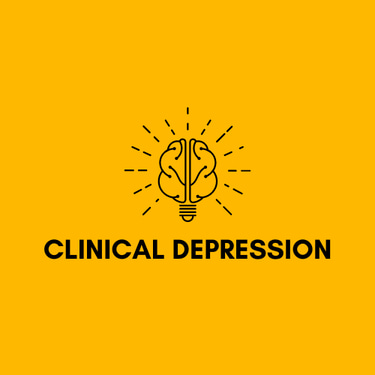For Questions: Text (833)233-0869
Telemedicine for Depression: A Comprehensive Guide to Remote Mental Health Care


In today’s fast-paced world, mental health issues such as depression are becoming increasingly prevalent. According to the World Health Organization, depression affects more than 264 million people worldwide. Despite its widespread impact, many individuals still struggle to access the care they need. Telemedicine for depression offers a revolutionary solution by providing remote mental health care, making treatment more accessible and convenient. In this comprehensive guide, we will explore the benefits, challenges, and effectiveness of telemedicine for depression, helping you understand how this modern approach can support your mental well-being.
What is Telemedicine for Depression?
Telemedicine involves the use of digital technology to deliver healthcare services remotely. For depression, telemedicine typically includes video consultations, phone calls, or even text-based therapy sessions with mental health professionals. This approach allows patients to receive care from the comfort of their own homes, removing barriers such as geographical distance, transportation issues, and time constraints that might otherwise prevent them from seeking help.
The Rise of Telemedicine in Mental Health Care
The COVID-19 pandemic accelerated the adoption of telemedicine across various medical fields, including mental health care. With social distancing measures and lockdowns in place, many individuals found it difficult to access traditional in-person therapy sessions. Telemedicine emerged as a viable alternative, enabling people to continue receiving mental health support despite the restrictions. Even as the world returns to a semblance of normalcy, the convenience and effectiveness of telemedicine have solidified its place in the future of healthcare.
Benefits of Telemedicine for Depression
Increased Accessibility: Telemedicine breaks down geographical barriers, making it possible for people in rural or remote areas to access mental health care. It also benefits those with mobility issues or individuals who lack reliable transportation.
Convenience and Flexibility: Telemedicine offers the flexibility to schedule appointments at times that fit your lifestyle. Whether you prefer morning, afternoon, or evening sessions, telemedicine can accommodate your needs.
Reduced Stigma: The anonymity and privacy of telemedicine can help reduce the stigma associated with seeking mental health care. Patients can receive treatment from the comfort of their own homes without the fear of being seen entering a therapist’s office.
Continuity of Care: Telemedicine ensures that patients can maintain consistent contact with their healthcare providers, even during times of crisis or when travel is not possible. This continuity of care is crucial for managing chronic conditions like depression.
Cost-Effectiveness: Telemedicine can be more cost-effective than traditional in-person visits. Patients save money on transportation, and some telemedicine services may offer lower rates than in-office appointments.
How Telemedicine for Depression Works
Telemedicine for depression typically follows a similar process to traditional in-person therapy, with a few key differences due to the remote nature of the service. Here’s how it usually works:
Initial Assessment: The process begins with an initial assessment, where the patient discusses their symptoms, medical history, and treatment goals with a mental health professional. This assessment can be conducted via video call, phone call, or through an online questionnaire.
Treatment Plan Development: Based on the assessment, the mental health provider will develop a personalized treatment plan. This plan may include therapy sessions, medication management, lifestyle changes, and self-care strategies.
Regular Therapy Sessions: Patients attend regular therapy sessions through video calls, phone calls, or even chat-based platforms. These sessions focus on discussing progress, addressing challenges, and adjusting the treatment plan as needed.
**Medication Management
(Continued)
Medication Management: For patients prescribed antidepressants or other medications, telemedicine allows for ongoing medication management. Providers can monitor the effectiveness of the medication, adjust dosages if necessary, and manage any side effects through virtual consultations. Prescriptions can often be sent directly to a patient’s local pharmacy or delivered to their home.
Progress Monitoring and Follow-Up: Telemedicine platforms often include tools for tracking mood, symptoms, and overall progress. Patients can use these tools to log their feelings, which helps both the patient and provider to monitor the effectiveness of the treatment plan over time. Follow-up appointments are scheduled as needed to ensure continuous support and care.
The Effectiveness of Telemedicine for Depression
Numerous studies have shown that telemedicine can be just as effective as in-person treatment for depression. A 2018 study published in JAMA Psychiatry found that telemedicine-based cognitive behavioral therapy (CBT) was as effective as traditional face-to-face CBT for treating depression and anxiety. Another study in The Lancet highlighted that telemedicine could help reduce the symptoms of depression and improve the overall quality of life for patients.
The effectiveness of telemedicine for depression is supported by its ability to deliver evidence-based treatments like CBT, dialectical behavior therapy (DBT), and interpersonal therapy (IPT) remotely. These therapeutic approaches are adaptable to online platforms, allowing patients to receive the same quality of care they would in an office setting.
Challenges and Considerations in Telemedicine for Depression
While telemedicine offers many benefits, it also comes with challenges that both patients and providers should consider:
Technology Barriers: Not everyone has access to reliable internet, a smartphone, or a computer, which can limit the effectiveness of telemedicine. Additionally, older adults or those unfamiliar with technology may find it difficult to navigate telemedicine platforms.
Privacy Concerns: While telemedicine platforms are designed with security in mind, some patients may still have concerns about the confidentiality of their sessions. It’s crucial to choose a platform that is HIPAA-compliant to ensure patient privacy is protected.
Lack of Physical Presence: Some patients may feel that the lack of face-to-face interaction diminishes the therapeutic experience. The absence of physical presence can make it harder for therapists to read body language or non-verbal cues, which are often important in understanding a patient’s emotions and needs.
Crisis Situations: Telemedicine may not be suitable for individuals in immediate crisis, such as those experiencing severe suicidal thoughts or other urgent mental health issues. In such cases, in-person care or emergency intervention may be necessary.
Insurance Coverage: Although telemedicine is becoming more widely accepted, not all insurance plans cover remote mental health services. It’s important for patients to verify coverage with their insurance provider before beginning telemedicine treatment.
The Future of Telemedicine for Depression
The success of telemedicine during the COVID-19 pandemic has opened the door for its continued use in the future. As technology continues to advance, the possibilities for telemedicine in mental health care are vast. Virtual reality therapy, AI-driven mental health assessments, and remote group therapy sessions are just a few of the innovations on the horizon.
Moreover, as more healthcare providers and patients embrace telemedicine, it’s likely that insurance companies will continue to expand their coverage of these services. Government regulations may also evolve to support the growth of telemedicine, ensuring that it remains a viable and accessible option for those seeking mental health care.
Tips for Maximizing the Benefits of Telemedicine for Depression
If you’re considering telemedicine for depression, here are some tips to help you get the most out of your virtual therapy experience:
Choose the Right Platform: Research telemedicine platforms to find one that fits your needs. Look for platforms that are HIPAA-compliant, user-friendly, and offer the services you require, such as video consultations or text-based therapy.
Prepare for Sessions: Just like with in-person therapy, it’s important to prepare for your telemedicine sessions. Find a quiet, private space where you won’t be interrupted, and make sure your technology is working properly before the session begins.
Be Open and Honest: Communication is key in telemedicine. Be open and honest with your therapist about your symptoms, challenges, and progress. The more information you provide, the better your therapist can tailor the treatment to your needs.
Stay Engaged: Participate actively in your treatment plan. Use any tools or resources provided by your telemedicine platform, such as mood trackers or educational materials, to stay engaged in your mental health journey.
Follow Up Regularly: Consistency is crucial in mental health treatment. Make sure to attend your scheduled appointments and follow up with your therapist regularly. If you miss a session, reschedule as soon as possible to maintain continuity of care.
Conclusion
Telemedicine for depression represents a powerful tool in the fight against mental health issues. By offering increased accessibility, convenience, and effective treatment options, telemedicine is helping to break down barriers that prevent people from getting the care they need. While there are challenges to consider, the benefits of telemedicine are undeniable, making it a promising solution for millions of people struggling with depression.
As telemedicine continues to evolve, it’s likely to play an even greater role in mental health care, providing innovative and effective ways to support those in need. If you or someone you know is dealing with depression, telemedicine may be the key to accessing the help and support necessary to improve mental well-being and quality of life.
©2025
Clinical Depression
For Questions: Text
(833) 233-0869
